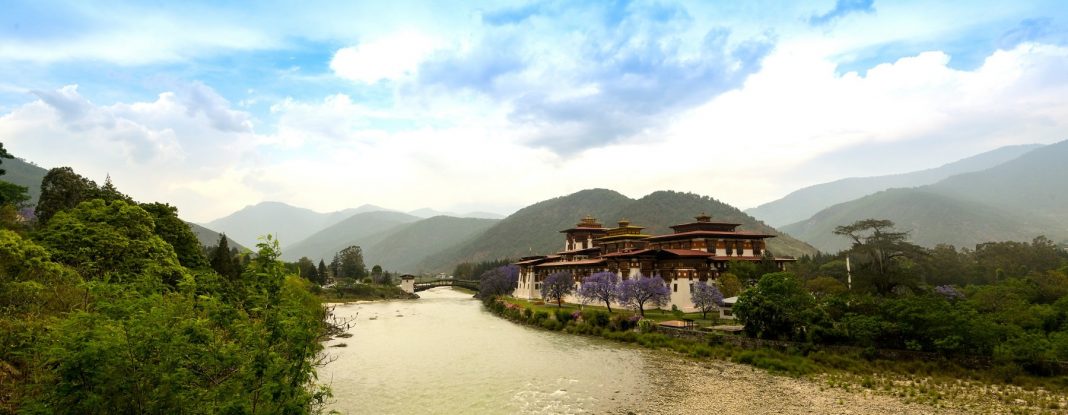Amongst South Asia’s emerging cricket nations – Bhutan, Maldives and Nepal – it is the latter who have enjoyed the spotlight. Understandably so, as the sheer passion that the Nepalese have for the game is unparalleled in the Associate world. Furthermore, with large participation numbers, men’s and women’s contracts and ODI status, they are making meaningful strides towards a potential International Cricket Council (ICC) Full Membership in the future.
Keen to step out of Nepal’s shadow however, is the tiny Kingdom of Bhutan. Nestled high amongst the breathtaking, snow-clad peaks of the Himalayas, cricket has made phenomenal gains here. In fact, Bhutan is that rare Associate country where cricket can lay claim to being in the top five most popular sports nationally.
Emerging Cricket sat down with new Bhutan Cricket Council Board (BCCB) Chief Executive Officer Damber Singh Gurung to discuss the BCCB’s origins, the rapid growth of cricket as well as the challenges facing the game in ‘The Land of the Thunder Dragon’.
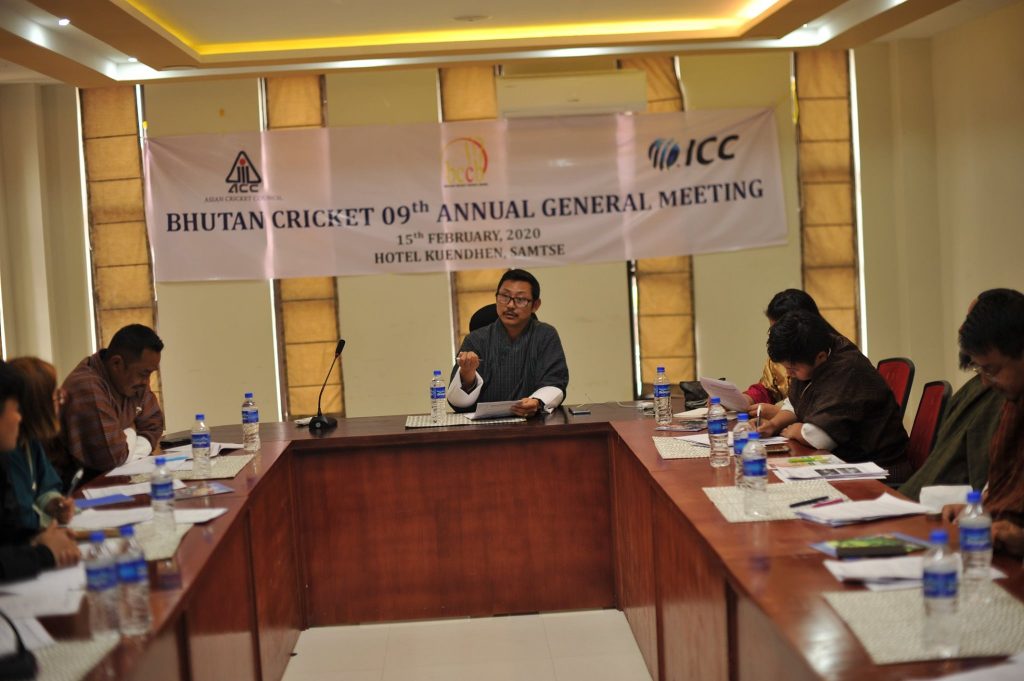
Origins
While there are reports of cricket being played pre-1990s in southern border towns, it was the belated introduction of cable television in 1999 that first brought widespread access to cricket in Bhutan.
Prior to this, Bhutan had been a completely insular society with no television or internet access. Fearful of immoral Western influences corrupting their unique Buddhist lifestyle, the nation’s rulers had long resisted globalisation and modernisation. They finally relaxed this stance in 1999, with the proviso that Bhutan would offer its own television channel through the Bhutan Broadcasting Service (BBS). With TV came Indian television serials, Bollywood movies and of course, the cricket!
“With the introduction of cable television, we had the World Cup on our screens. It motivated people to start playing, especially those who had studied in India and were familiar with the game beforehand. They started playing regularly in Thimphu and slowly, these guys even started organising tournaments,” says Gurung.
There was a chronic lack of funding for cricket, but it did not prevent a bunch of intrepid enthusiasts to organise and form a cricket board.
“In 2001, we applied for ICC membership. Later in 2003, we officially became ICC members. We also got our first international coach from Sri Lanka. After 3 weeks of training, we played our first international game in Kathmandu, Nepal, where we played the hosts and Maldives in a tri-series. That’s how it started.”
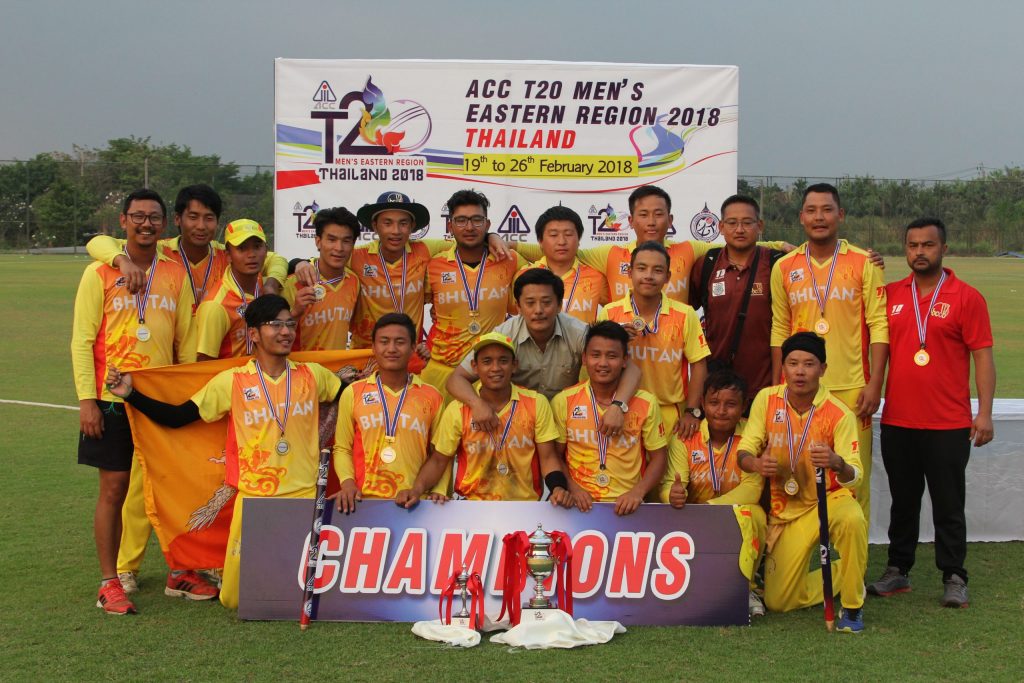
Just a year after making their debut, Bhutan registered its first win by beating Iran in an ACC Trophy Game. For a fledgling cricket nation, it was an impressive start. Gurung himself played a crucial part, scoring 21 runs and taking 2 wickets. He attributes his love of cricket to his father.
“I have to thank my dad for introducing cricket to me. I was brought up in southern part of Bhutan, near the border with India [in Phuntsholing]. He bought all the equipment – bat, ball everything – so that I could play. Our sports were seasonal. During the monsoon, we used to play football, table tennis, badminton and then cricket in the drier months.”
During his playing days, Gurung got involved with coaching and loved it. He went onto acquire Level 3 qualifications. “I possess 17 years of coaching experience, from a junior level to senior level. I was actually head of the coaching department before I took over as Chief Executive in 2019,” he says.
Growth and development
Cricket in Bhutan has come a long way since the early days. There has been a record increase in participation numbers from 13,500 to more than 45,000, all in the last two or three years.
“Until 2019, we had cricket being played in only six districts out of a total of 20. However, now we have doubled that and expanded to 12 districts. The feedback that we get from people, they want to play the sport because they like it. Cricket has everything. It is fun to play and also an interesting, strategy-based game,” Gurung states.
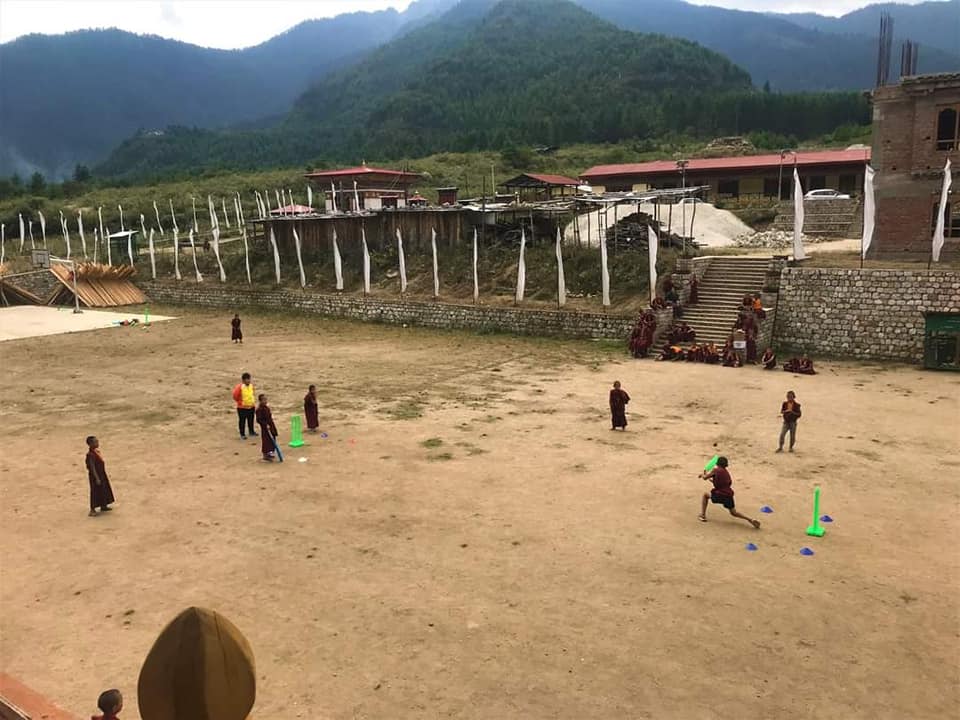
What really sets Bhutan apart from most other Associate nations is the widespread access to cricket on TV. It shares a lot of cable channels with India, with around five or six of them showing cricket at any given time. According to Gurung, the board is looking on capitalise on this by increasing participation numbers even further. After all, it is important for cricket to stand out in a crowded sports market.
“Football is the number one sport here. We also have archery, table tennis, and so many other sports that people want to play. With cricket, we are not trying to compete with other sports. Our responsibility is to take the game to schools and communities, reach every corner of Bhutan.”
“We know that cricket is becoming more and more popular. It is currently the fastest growing sport in Bhutan. This is something that we need to continue,” Gurung highlights.
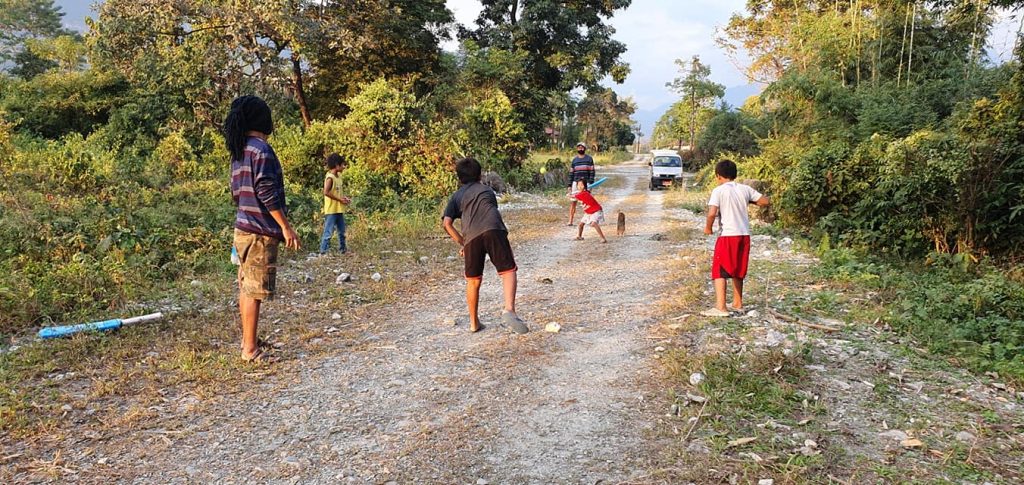
Domestic structure and funding
Bhutan’s domestic scene is structured in a very systematic manner, with youth tournaments organised from the U-13 to U-19 age brackets. Then there are club tournaments held in both T20 and 50-Over formats, with T10 also being considered seriously for inclusion.
“Overall, we conduct more than 50 tournaments in a year. Right now, we are looking at streamlining our domestic competitions so that we can have a better pathway for players. From school to clubs to regional and ultimately the national level. Ideally, we want to set up a prestigious 50-Over tournament similar to India’s Ranji Trophy. It will give greater opportunities to players and coaches, whilst enabling us to identify talented male and female cricketers early on, from U-16 level,” says Gurung.
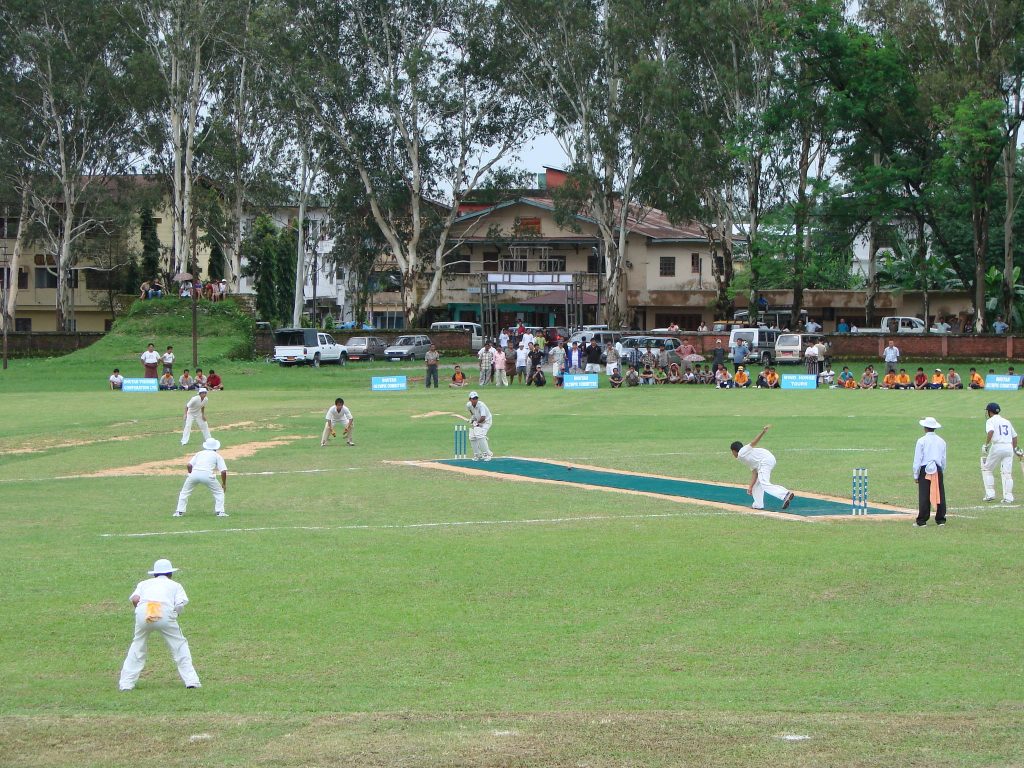
However, putting plans into action is not a simple matter. The CEO explains with a smile that BCCB is heavily reliant on ICC and Asian Cricket Council (ACC) funding, so they are forced to run a tight ship.
“90% of our operating revenue comes directly from ICC and ACC. As for the rest, we receive some financial support from the Olympic committee, as with all sports federations, as well as some small sponsorship funds. We also conduct youth programmes in partnership with UNICEF Bhutan, which allows us to reach more school kids with entry level cricket programmes.”
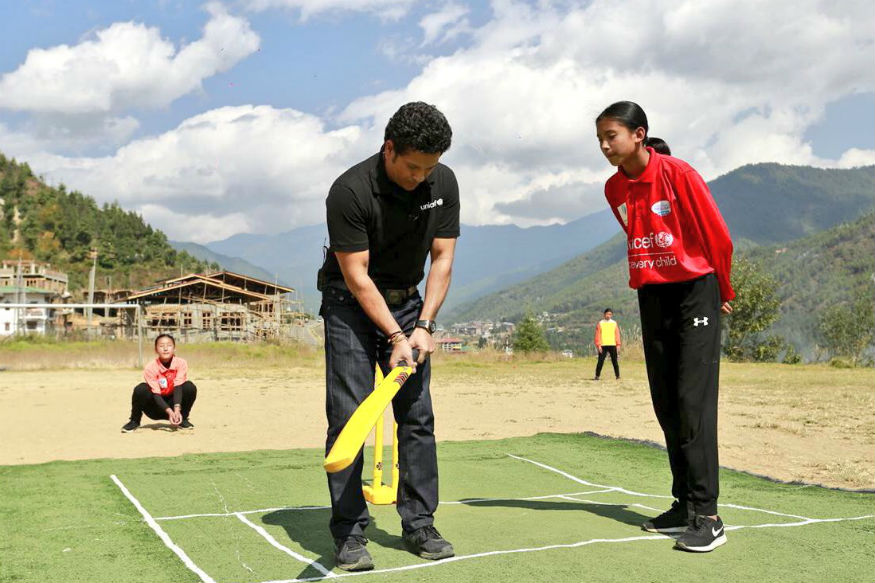
Contracts and exchange programmes
Impressively, a limited annual budget has not stopped the board from professionalising its national women’s setup. Earlier this year, the board started a High-Performance Programme (HPP) with the women’s cricketers contracted for ten months as a trial.
“We have contracted them for ten months. Plus, we are providing them with accommodation, food, coaches, training and physiotherapy. Their work is entirely to play cricket and train. After November, we want to assess what the results are like. If this is successful, we want to roll this out to the men’s team as well,” says Gurung.

The conversation then moves to India’s special relationship with Bhutan. It is a friendship which has endured for many years. “Yes, we have a very good relationship with India dating back over 50 years. 90% of our imports originate from India. Most Bhutanese people also know how to speak in Hindi,” Gurung notes.
Furthermore, the country shares its borders with four different Indian states – Assam, Arunachal Pradesh, Sikkim and West Bengal – all of whom play in the Ranji Trophy. In 2019, the BCCB entered into an exchange programme with the Cricket Association of Bengal (CAB).
“We are located in a continent where the standard of cricket is very high. So, having India next to us is very helpful. We started a relationship with CAB back when Sourav Ganguly was still CAB President,” Gurung says.
“Before the onset of COVID-19, the CAB secretary visited us in Thimphu. Our development officer then met with Ganguly personally in Kolkata. They were very cordial and ready to help us. During summer (June-July) we were supposed to send at least 30 athletes (both men and women) to Kolkata for coaching and training. Unfortunately, our plans got postponed due to COVID-19, but it is something that will happen in the near future and we want to keep building this relationship,” he explains further.
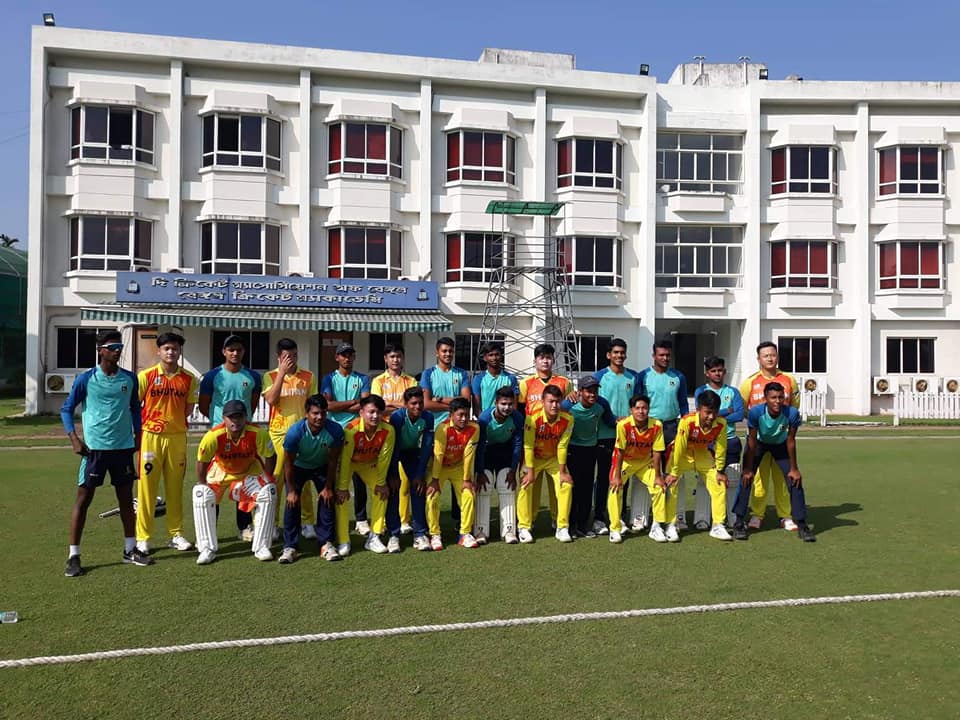
Geographical challenges
Bhutan’s spectacular mountain vistas has made it a hiking and trekking mecca internationally. Unfortunately, it also acts as a major barrier for infrastructure development.
“Due to our mountainous topography and average altitude of 8,000 feet above sea level, it is very difficult to acquire flat land to build cricketing infrastructure. Flattening land to build grounds can also be prohibitive from a cost perspective,” admits Gurung.
The board has managed to find a way around these challenges by building a cricket ground on the small strip of flat land in the far-south of the country. Located next to the border with Assam, the picturesque Gelephu Cricket Ground can be reached in seven hours by car or a short 20-minute by flight away from Thimphu, the capital. It boasts six turf pitches and can accommodate around 5,000 spectators on its grassy banks.
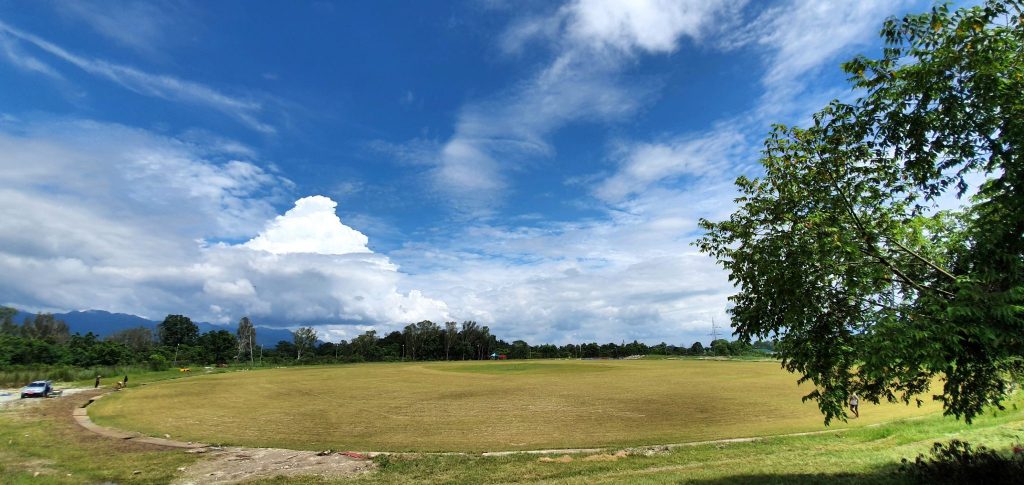
It’s a fantastic development but Gurung stresses the urgency of building more cricket stadiums, particularly in high population centres such as Thimphu.
“The land has been allocated to us to build a cricket ground in Thimphu. But we are facing a shortfall in funding, as the cost will be very high. We have requested the Indian government to help us to build a Bhutan-India Friendship Cricket Stadium.”
He is buoyed by the keen interest that the Indian Ambassador displayed towards the project. “If they help us to build a stadium here, then it will be one of the most beautiful cricket grounds in the world. When we have two grounds, we can always write to ICC and ACC to bring international tournaments here. We also plan to have a T20 franchise series here, once the infrastructure is better.”
Future goals
In keeping with their ambitions of continuous growth, BCCB have laid out a detailed roadmap for cricket’s future in Bhutan. As we speak on the phone, Gurung breaks down their top list of priorities.
“First of all, we want cricket to be one of the most liked sports in Bhutan. There was a time when people living in the more remote areas had no clue what cricket was. Nowadays, it’s a completely different story. Most people know about cricket and how it is played.”
“Secondly, it is very important for us to have consistent development and continuous improvement, right down from the junior level. If we want to play in future World Cups, our processes and pathways need to be efficient. Also, with our HPP, our main focus right now is to win that tournament and get the women to qualify for the global T20 World Cup qualifiers.”
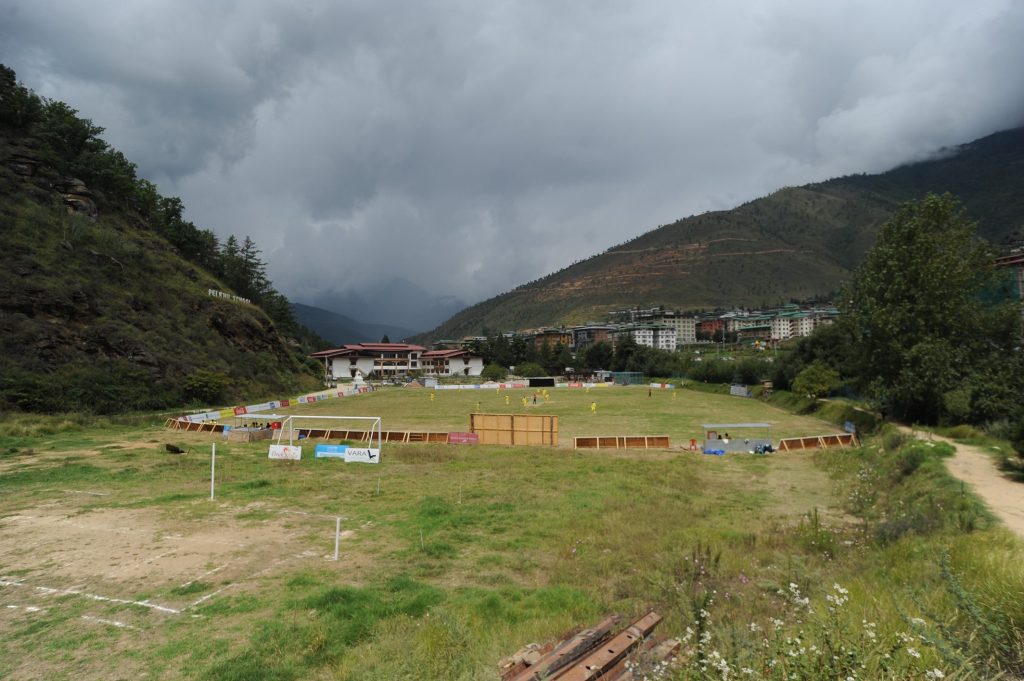
Lastly, the chief executive wants to leverage Bhutan’s new found popularity as a tourist destination by adding cricket to the overall package.
“Bhutan is a place where everyone wants to visit. What we are targeting in the future is to start cricket tourism, which will also help us with the economy. Once we have a good quality of infrastructure in place, we can invite international teams more easily for pre-tour preparations, matches and high-altitude training. It will help us to become more financially sustainable.”
With an aspirational CEO at the helm, remarkable growth numbers and proximity to cricketing superpowers, Bhutan have all the ingredients to become a competitive cricket nation in Asia. Other Associates in the region better watch out!
You’re reading Emerging Cricket — brought to you by a passionate group of volunteers with a vision for cricket to be a truly global sport, and a mission to inspire passion to grow the game.
Be sure to check out our homepage for all the latest news, please subscribe for regular updates, and follow EC on Twitter, Facebook, LinkedIn and YouTube.
Don’t know where to start? Check out our features list, country profiles, and subscribe to our podcast.
Support us from US$2 a month — and get exclusive benefits, by becoming an EC Patron.

